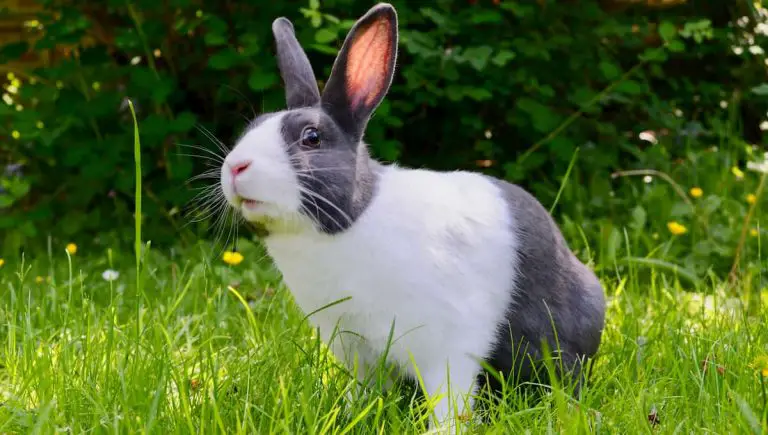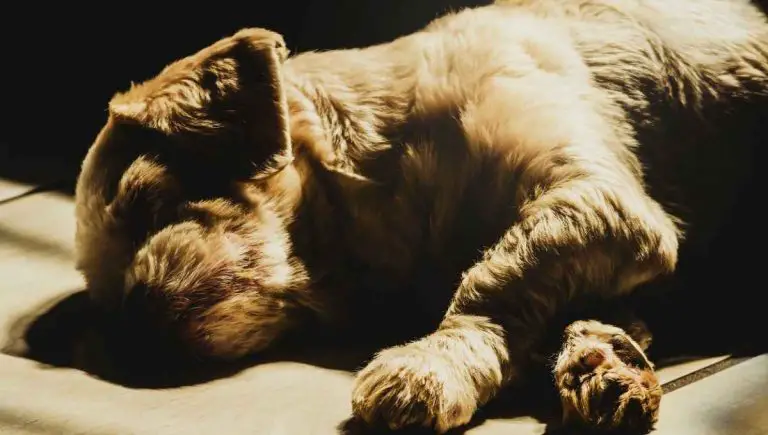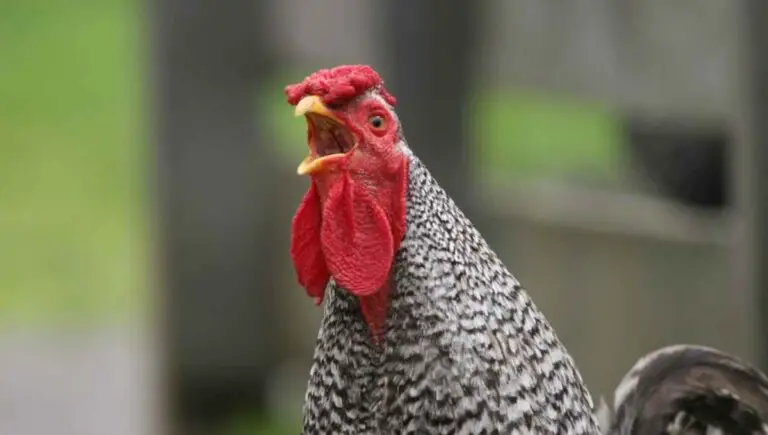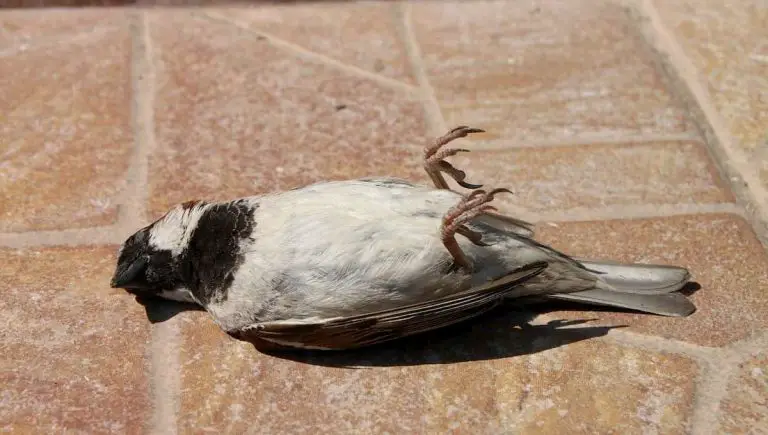Do Cats Have Kittens in the Winter? (This Might Shock You!)

Winter is here and we’re all bundled up, but what about our cats? There are many concerns when it comes to our beloved feline friends during the chilly season. One question you might be wondering is do cats have kittens in the winter? Luckily for you, we’ve got the answer!
Cats do not usually have kittens in the winter season. Cats are seasonal breeders who need around 12 hours of daylight in order to trigger a heat cycle. Because the nights are long and there’s less light during the winter, cats usually don’t go in heat during these cold months.
In this blog post, we will talk about when cats do go into heat, the signs to look for if they are pregnant or in heat, and what you can expect once they go into labor!
This post contains affiliate links from Amazon and other stores. This means Yard Blogger may earn a commission should you make a purchase using any of our links. Please refer to our full affiliate disclosure policy for full details.
Here’s a Quick Pro Tip!
Do you have a cat that is in heat, or just has behavior problems in general due to stress and anxiety?
One thing that has helped many cat owners is having a cat pheromone diffuser. These work by releasing pheromones into the air that calm your cats and de-stresses them. It relieves anxiety and promotes relaxation for your kitty.
We personally recommend the Feliway Classic Cat Calming Pheromone Diffuser Kit at Amazon.
This has worked wonders for many cat owners!
What Time of the Year Do Cats Have Kittens?
There’s this period called kitten season, which is the period in which cats usually get in heat and give birth. Yes, they can breed all year long because their reproductive organs don’t close up or shut off during a certain time of the year, but there IS a period in which they are most likely to breed.
Kitten season can begin in early spring and lasts through the summer months. Peak months are from February through March and May and likely extend through June. After that, a female cat’s reproductive system enters a dormant period, which is referred to as “anestrus.” This happens during the winter.
And so the cycle goes and as the weather begins to warm, the female cats start to go in heat. After they prowl and mate, they give birth to their litters sixty days after. This is the time when animal shelters become overwhelmed with the number of unwanted kittens.
According to the American Society for the Prevention of Cruelty to Animals, there are approximately 6.5 million companion animals enter U.S. animal shelters nationwide every year.
If you ever decide to adopt or foster kittens, forget about pet shops and visit your local animal shelter instead. They will advise you on how to care for your cat as well as the cat accessories you may need.
Now, how about in places where there’s warm weather practically all year round?
This is a special case, with California being the perfect example. Over there, they have kitten seasons around twice a year because of the perpetually sunny climate.
You might also enjoy our post on How to Feed Outdoor Cats While on Vacation
Do Cats Go Into Heat During the Winter?
Cats do not usually go into heat during the winter due to the fact that the amount of daylight highly influences a female cat’s propensity to breed. With the days being shorter in winter, cats typically don’t go into heat around this season.
From nature’s point of view, this ensures that kittens will not be born during the coldest seasons of the year in which there is less food to go around.
The main food sources of cats are mice and rabbits. During winter, these critters are deep in hibernation. This means that a mother cat may not be able to care for her kittens well during this season.
This is Mother Nature in action in making sure that no or fewer kittens will have to endure the harshness of the winter months. Since cats will not go in heat during this time, the kittens will be born during springtime instead, which is a more pleasant season for practically everyone.
How Does Daylight Affect the Heat Cycle of Cats?
It’s not just cats, you see. A lot of living things are actually dependent on sunlight to be able to function well – plants need natural sunlight to be able to produce oxygen during photosynthesis.
In the case of cats (and humans as well), it’s all about melatonin, a sleep hormone released by a lot of animals when there’s no light. It aids in maintaining the sleep-wake cycle.
As a human, you definitely notice that you feel super sleepy when there’s rain outside. You also find it difficult to get back to sleep when the light gets turned on during the evening.
How Do Cats Go Into Kitten Season?
Cats become sexually mature really early – they can already breed at just four months old, which is why vets and animal shelters always remind pet owners of the importance of having cats get spayed or neutered early.
From the moment they reach their fourth month, the cats will start to go through heat cycles, in which the females will seek out a mate. This is what they call the kitten season.
Given the solitary nature of cats, they developed a certain ritual when it comes to the procreating process. Both male and female cats must show a willingness to mate, hence the very obvious behavioral changes when they are in heat.
These include having loud and persistent meowing, rubbing and rolling everywhere (for the female cat), and assuming a position as if ready for intercourse.
This position is termed spinal curvature, in which the female cat sinks her back and deflects her tail sideways. She will do anything to get attention, not just from male cats but from humans as well. The heat period of a female cat happens at 2-3 week intervals.
When in heat, the female can mate more than once a day and can do it with more than one male. This is why a female cat’s litter may have several fathers.
This is apparent when you see different fur colors on newborn kittens.
What Exactly is a Litter?
This is the number of kittens that a mother cat can conceive through a pregnancy. She can have 4-8 kittens on average and she can get pregnant several times a year. This is why the cat population is way bigger than the dog population.
A mother cat can also have more than one litter during pregnancy because she can mate with multiple mate cats during her average 7-day period of her being in heat.
This means she can get pregnant by different male cats and have their litters all at one time. This allows her to give birth to kittens with different fathers at once.
You might also enjoy our post on What to Do if Your Neighbor Has Too Many Cats
How Can I Tell If My Cat is Pregnant?
If your female cat who has not been spayed yet, has shown signs of being in heat and recently been outside the house, there is a high chance that she may be pregnant. Taking her to the vet is a sure option to find out, but you can watch out for physical and behavioral signs indicating that she’s bearing a litter. These signs show up around three weeks after mating.
- She stopped being in heat – a female cat goes through heat cycles every 10 days or every two weeks so if you notice that she suddenly stopped acting “weird,” then there’s a high possibility that she’s pregnant.
- Her nipples swell and become rosy in color – noticeable changes in your cat’s nipples are usually a sure sign.
- She gained weight – pregnant cats tend to gain around 2 to 4 pounds as she gets heavy with litter.
- She eats more than usual – just like a pregnant human, an impregnated cat will be eating for two, thus the dramatic increase in appetite.
- Her abdomen is swollen – obviously the most telling sign, which starts to show around the fifth week of a cat’s pregnancy. It will get bigger and bigger until she gives birth.
How Can I Tell If My Cat Is About to Give Birth?
Watch out for these signs to know if your female cat is about to unload her kittens:
- She’s looking for a nest – around two days before giving birth, your cat will be searching out random spots in your house to know where it’s safe and quiet enough to have her labor. Some cats only begin to nest just hours before going into labor.
- She’s restless and meows more than usual – you may see her pacing around, going in and out of her chosen nesting place 24 to 48 hours before giving birth. Additionally, she may also become noisier than usual with her meows and cries.
- She loses her appetite – she will suddenly eat way less than her usual appetite while she was in the middle of her pregnancy stage.
- She licks her vulva – her vulva will start producing a mild discharge as her labor day approaches. Your cat will want to keep her vulva clean, hence the licking.
Do I Really Have to Spay or Neuter My Cats?
This is a very important trip to the vet you must take. Not only will getting them fixed to prevent the birth of unwanted litters, it also stops the undesirable behaviors that cats display when they are spraying at your home.
Cats do this to attract mates during the breeding season, in which they will mark certain areas of your home with their spray. This gives off an unpleasant smell that is hard to remove.
Aside from having your cat spayed or neutered, you can also do your part in saving strays by adopting one from the shelter. The animals for adoption are usually fixed already before offering them to loving human parents.
Final Thoughts
Cats usually don’t have kittens in winter due to them being seasonal breeders. It’s fairly common for cats to have kittens in spring and summer, but there is a small chance that some kittens will be born in winter.
However, this is an abnormal case. There are instances throughout the year when some cats will have litters outside of their breeding seasons.
If you waIf you want to know if your cat will have kittens in winter, whether it’s due to you not spaying or neutering her or the likelihood that she is pregnant, then bringing her to the vet is always an option.







